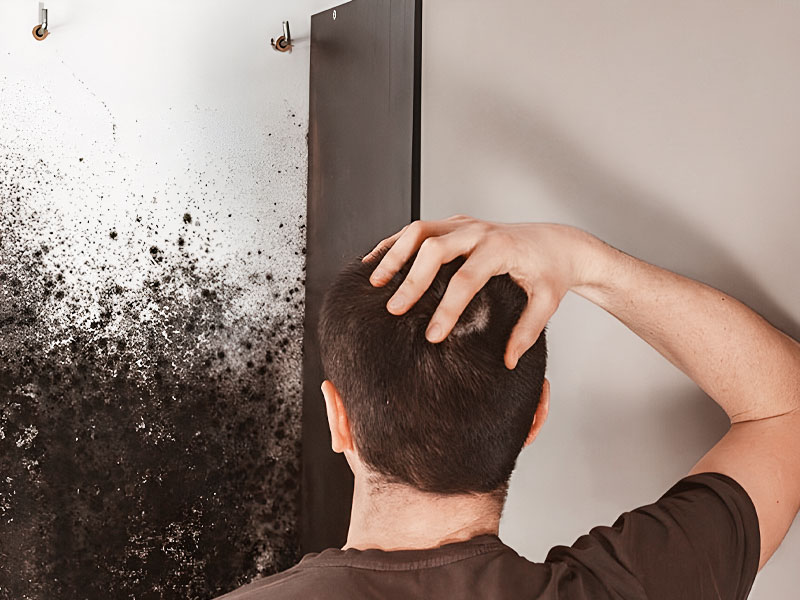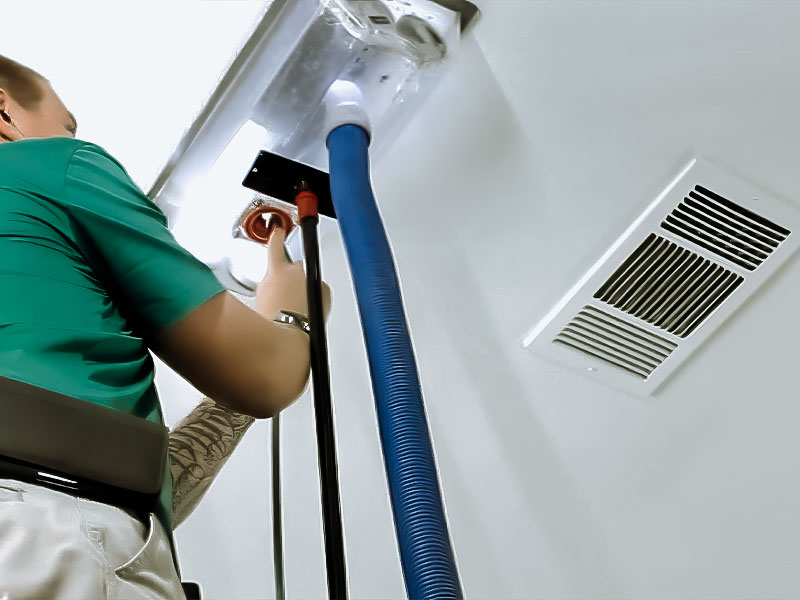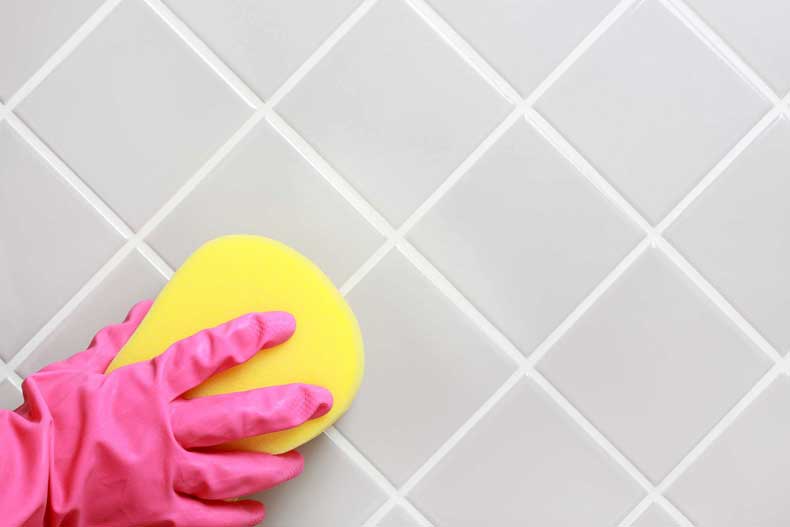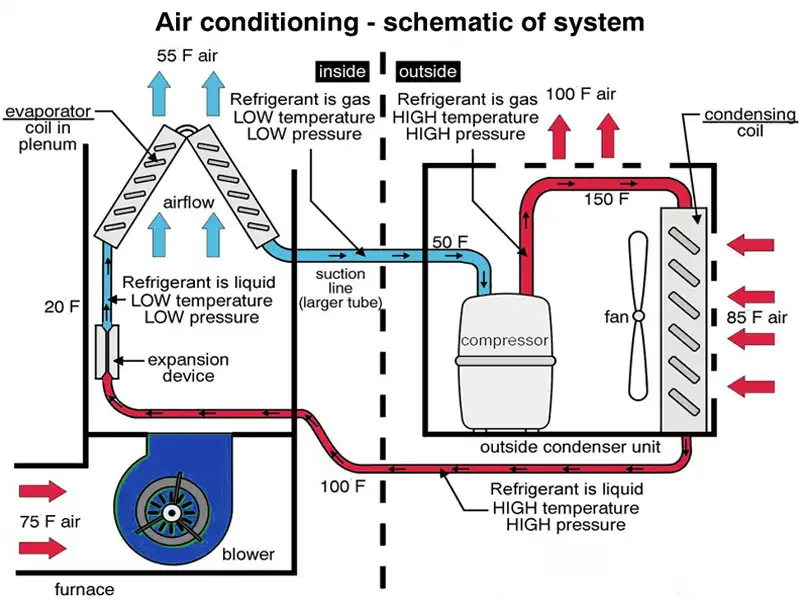The Dangers of Black Mold: Identifying, Preventing, and Dealing with Black Mold in Your Home
The Fungal Trinity: Distinguishing Between Mildew, Mold, and Black Mold
Mildew
Mildew is a form of superficial fungal growth that appears as a powdery or downy white or grayish coating on surfaces like bathroom tiles, walls, window sills, and showers. Mildew mostly grows flat along a surface rather than forming 3D colonies. It thrives in damp, warm environments with poor ventilation. While not as hazardous as black mold, mildew can cause allergic reactions and respiratory irritation in some people. Controlling moisture and ventilation helps prevent recurrent mildew issues indoors.
Mold
Mold is a type of fungus that grows in filaments and forms multicellular colonies. It produces microscopic cells called spores that give it its color. Mold can be found indoors and outdoors growing on various kinds of damp organic matter. Many mold species are harmless, but molds like black mold produce mycotoxins that can cause health issues when inhaled or touched. Mold often has a fuzzy or powdery appearance and tends to grow in circular colonies. Controlling excess moisture prevents excessive mold growth in homes.
Black Mold
Black mold refers specifically to toxic mold species in the Stachybotrys genus that produce mycotoxins, have a slimy texture, and feature dark greenish-black coloring. Black mold is known to be highly problematic for human health when spores are inhaled, ingested or touched. It grows rapidly into spreading clusters and takes root on materials like drywall, wood, and insulation if excess moisture persists. Complete removal of porous contaminated materials along with moisture control is key to eliminating harmful black mold from a living space once discovered. Specialized PPE and containment procedures are used in remediation.
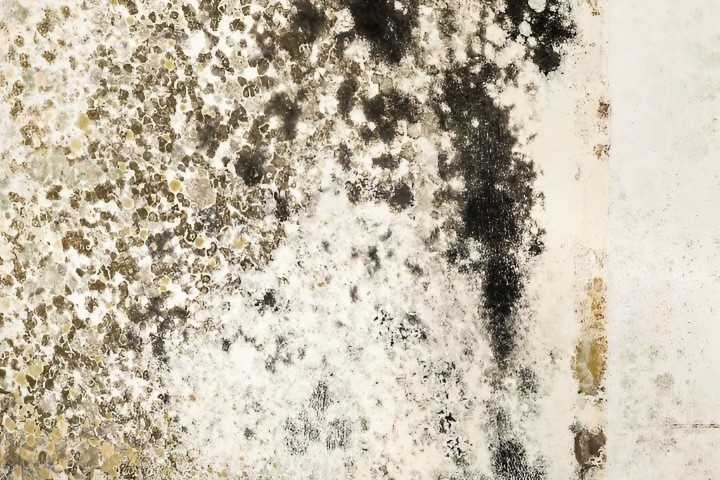
Understanding the Importance of Identifying Black Mold
Black mold, also scientifically termed “Stachybotrys chartarum“, is one of the most toxic types of household mold. Unlike more common gray or white molds, black mold produces dangerous mycotoxins that can cause severe health issues when inhaled, ingested, or touched. That is why it is so critical to learn how to identify signs of black mold growth in your home as soon as possible and take proper remediation steps. Catching and removing black mold in the initial stages limits how much contaminated material needs disposal and extensive structural repairs. Especially for vulnerable groups like children, seniors, pregnant women and immunocompromised individuals, recognizing indicators of black mold infestation protects wellbeing. This guide covers everything Magnolia, Texas homeowners need to know about characteristics, risks, and professional treatment when facing this hazardous mold.
Characteristics of Black Mold: How to Identify It
Appearance: Describing the Physical Appearance of Black Mold
Black mold colonies have a distinctive appearance different from more benign gray, white or green molds homeowners may find growing in bathrooms or basements from time to time. Key identifying traits involve:
Color – Unlike lighter bread or cheese molds, Stachybotrys mold has a dark black-green hue. New growth appears wet-looking or slimy. Shape – Black mold grows in sheet-like clusters spreading across surfaces, rather than isolated circular spots. Size – Colonies expand rapidly under ideal damp, dark conditions. Quickly growing or spreading dark mold is cause for concern.
Texture: Explaining the Texture and Consistency of Black Mold
In addition to its dark green-black color, black mold has a uniquely wet, slimy texture, allowing the colonies to adhere tightly to organic material like wood, drywall or insulation it is digesting. Disturbed mold growth becomes powdery and easily crumbles. Advanced Stachybotrys mold also produces microscopic spores that contaminate the surrounding air. Any dark dense mold growth more than 10 square feet large warrants testing by a professional mold specialist familiar with black mold characteristics.
Color: Detailing the Distinct Black Coloration of Black Mold
The deeply pigmented dark color that gives black mold its name allows easy visual identification. If you peel away water-damaged drywall or ceiling tiles and see greenish-black mold growing behind them, there is likely a moisture issue allowing the fungal colonies to thrive. The longer the black mold has been actively growing unseen, the larger the contaminated area requiring professional mold remediation. Catching small patches of black mold promptly makes removal easier.
Odor: Discussing the Musty, Earthy Smell Associated with Black Mold
An experienced mold inspector relies not only on visual clues of dark fungal growth, but also tells-tale musty odors that often accompany moisture issues. The stench of black mold has an earthier, fungal smell compared to typical household gray mold that just smells old and damp. Trust your nose – if a space has a strong, unpleasant odor resembling dirt and decay, black mold could be lurking out of sight, actively digesting damp sheetrock or wall insulation to fuel its spread. Seek professional humidity level testing and mold investigation services immediately at first whiff of such a smell.
Common Places to Find Black Mold – Signs of Black Mold
Visual Signs
- Black or dark greenish spots or patches on walls, wood, cardboard, or insulation;
- Musty blackish surface growth expanding rapidly in size on materials;
- Powdery black residue around vents or fans;
- Visible mold growing inside HVAC systems.
Olfactory Signs
- Earthy, musty smell resembling wet soil or rot;
- Strong mildew odor in humid environment;
- Scent gets stronger over time.
Health Signs
- Worsening allergy/asthma symptoms;
- Frequent headaches, nausea, fatigue when at home;
- Unexplained weight loss or loss of appetite;
- Respiratory infections recurring after moving into a new home.
Environmental Signs
- Recent water demage (flooding or plumbing leaks) in the building;
- Visibly damaged building materials from water stains;
- Mold previously treated but keeps recurring;
- Humid or poorly ventilated rooms;
Moist Areas:
Highlighting Areas with High Humidity or Water Damage
Since mold requires a consistent source of moisture to grow, black mold thrives in areas of the home prone to higher humidity levels, water leaks and flooding. Carefully inspecting for hidden mold growth behind walls, under carpets or above ceiling tiles in notoriously damp rooms provides the best chances for early detection.
Bathrooms: Discussing Potential Black Mold Growing Sites in Bathrooms
Bathrooms rank highest for black mold outbreaks due to constant humidity from hot showers. Areas around plumbing fixtures, toilets, bathtubs and under sinks provide ideal conditions for rapid black mold colony expansion, especially if past leaks or floods went unnoticed. Homeowners may spot visible mold first appearing around bathroom ceilings, baseboards, window frames and tile grout lines. Running exhaust fans, fixing dripping faucets rapidly, and monitoring bathroom infrastructure integrity helps prevent unchecked moisture accumulation that nourishes black mold.
Basements and Crawl Spaces: Explaining the Likelihood of Black Mold in These Areas
Like bathrooms, basements and crawl spaces tend to be cooler and damper than occupied rooms of a home. Concrete foundation walls bordering dirt on the outside remain persistently humid and difficult to properly dry out once water enters from surrounding soil or floods. In basements, black mold flourishes on open wall framing, subfloors, insulation and stored items if excess moisture goes unchecked. These large out of sight areas allow black mold colonies to become well established before being detected.
Similarly, dark cramped crawl spaces frequently have plumbing pipes running through them. Any condensation or unnoticed leaks provide moisture vital for mold spore germination. Black mold then digests building materials and spreads across fiberglass insulation and exposed wooden structural members out of sight. Regular basement, foundation and crawl space scanning during home/HVAC inspections ensures catching black mold infestations sooner rather than later. Letting colonies expand leads to mycotoxin accumulation and greater health risks.
HVAC Systems: Addressing the Potential for Black Mold in Ventilation Systems
Another out of sight hot spot for black mold involves a home’s heating, ventilation and air conditioning (HVAC) infrastructure. Condensation naturally collects in ductwork, air handlers, heat exchangers and other HVAC components. Filters also harbor dust, dander and mold spores. Any past flooding or plumbing leaks around these appliances increases the chance for hidden black mold infestation behind wall linings or units. Spores then circulate through open ducts directly into living areas leading to respiratory complaints or illness. Professional mold testing and remediation specialists have equipment enabling inspection of cramped HVAC cavities most homeowners cannot access themselves.
Health Risks Associated with Black Mold Exposure
Allergies and Respiratory Issues:
Describing Common Allergic Reactions and Respiratory Problems
Caused by Black Mold Inhaling the tiny spores floating in the air once black mold colonies disturb replicates triggers severe allergic reactions for many people. Mycotoxins produced by Species like Stachybotrys chartarum irritate lung tissue, resulting in wheezing, difficulty breathing, sinus congestion, sore throat and coughing. Those with asthma or respiratory conditions like COPD often experience worsened symptoms or frequent attacks upon black mold overgrowth in their homes. Seeking quick mold remediation limits how many spores ultimately release into occupied areas once colonies begin actively growing behind walls/ceiling surfaces of a moist property.
Asthma Triggers:
Discussing How Black Mold Can Worsen Asthma Symptoms
The Centers for Disease Control (CDC) identifies indoor mold exposure as a significant asthma attack trigger among sensitive individuals. Inhaling particulate matter containing mold spores, cell wall fragments or tiny mycotoxin droplets provokes airway constriction and breathing impairment. Homes with dampness issues, recent water damage – leaks or flooding have higher risks for black mold infestations in hidden wall/ceiling cavities that contaminate indoor air. Children already struggling with asthma face exposure risks from moldy bedrooms, playrooms or HVAC systems not maintained properly. Remediating black mold properly protects vulnerable groups from serious respiratory distress.
Toxic Effects:
Explaining the Potential Toxic Effects of Certain Black Mold Strains
Along with allergies and asthma attacks, certain black mold varieties like Stachybotrys release toxic substances categorized as mycotoxins or volatile organic compounds (VOCs) as digestive byproducts. When inhaled, ingested or absorbed through the skin, these compounds act as neurotoxins and cytotoxins damaging nerves, cells and organs. Documented effects involve headaches, memory loss, nausea, immunodeficiency and tremors or numbness in limbs depending on toxin type and dose from mold colony size. Infants, pregnant women, seniors and those using immunosuppressant drugs face higher risks for adverse reactions. Seeking immediate medical attention for unexplained symptoms upon discovering black mold provides proper diagnosis and treatment.
Seeking Medical Care for Suspected Black Mold Exposure
If you or family members already experience chronic respiratory complaints, neurological issues or frequent infections, undiagnosed black mold growth in your living environment could be the underlying trigger. See a doctor immediately if multiple symptoms appear suddenly while living in a home with visible mold issues present for proper diagnosis and documentation of condition severity. Especially if immunosuppressed, elderly, pregnant or undergoing cancer treatments, take proactive measures.
Prevention and Treatment of Black Mold
Moisture Control:
Providing Tips on Preventing Mold Growth by Controlling Moisture Levels
Managing moisture strategically to create dry, low humidity conditions indoor deters mold spore growth into colonies in the first place. Measures like fixing plumbing leaks rapidly, using bathroom/kitchen fans regularly, adding home dehumidifiers and improving crawlspace/attic ventilation all assist in maintaining indoor humidity ideally under 45 percent. Homeowners should monitor humidity levels with hygrometers and take corrective action promptly once readings creep above this threshold for extended periods. Keeping indoor air dry denies black mold colonies the water activity they need to reproduce and expand in a structure. Routine checks after major storms, flooding or plumbing leaks also allow early mold remediation before major hazardous infestations take hold.
Regular Inspections:
Encouraging Regular Inspections to Identify Mold Issues Early On
Even in dry well-maintained homes, unexpected roof leaks, flooding or pipe condensation can nurture black mold growing unnoticed over time. That is why establishing regular visual inspections and tuned-in mold detection becomes so vital. Homeowners should periodically check interior walls, basements, crawlspaces and attics for visible mold, musty odors and moisture accumulation that could hide mold growth. Thermal cameras identifying cooler damp spots behind walls can also aid inspection. The sooner dark quick-spreading mold colonies are discovered, the less remediation materials and effort becomes necessary to protect inhabitants’ health. Especially after major flooding or storm damage, prompt professional mold assessments using air testing and surface samples better identify contamination before it gets out of hand.
Professional Remediation:
Recommending Professional Mold Remediation Services for Severe Cases
While small areas of surface mold under 10 square feet can often be addressed DIY, severe black mold infestations warrant calling in expert mold remediation specialists to contain, treat and dispose of contaminated materials safely. Attempting removal without proper gear and training risks spore clouds release through the rest of the home. It also fails to fix underlying moisture accumulation issues nourishing repeat mold comeback. Our licensed Texas mold professionals use specialized vacuums, air scrubbers, fungicides, protective equipment and disposal protocols to rid properties of black mold without secondary exposure. We create customized moisture control plans to prevent recurrence after remediation as well. Contact ProGeneralService first for black mold exceeding 10 square feet in size for reliable local mold abatement services protecting your family’s health.
How Do I Safely Black Mold Removal Myself?
Assess size – Small areas under 10 square feet may be DIY. Larger infestations need expert help. Protect yourself – Wear gloves, respirator mask and goggles. Cover skin fully. Contain area – Seal vents/openings with plastic sheeting to prevent spore spread. Mix non-toxic removal solutions – Vinegar, borax, hydrogen peroxide. Avoid ammonia. Scrub carefully – Slowly wipe surfaces to minimize aerial disturbance. Properly dispose all moldy porous materials immediately in sealed bags. Leave extensive black mold remediation to seasoned professionals equipped with containment air scrubbers, HEPA vacuums, commercial stripping solutions and building repair expertise not readily available to homeowners without proper mold certification. Contact ProGeneralService for reliable mold abatement in the Montgomery County, Texas region.
How Do I Prevent Black Mold Growth in My Home?
Moisture Control
- Fix leaks rapidly
- Improve drainage
- Use dehumidifiers
- Increase air circulation
- Routine Inspections
- Peer inside walls for hidden mold
- Scan basements, attics
- Document musty smells
Professional Maintenance
- Have HVAC systems cleaned
- Examine ductwork
- Follow moisture remediation plans
Mold growth requires water activity so keeping indoor relative humidity under 45 percent through ventilation, dehumidification and leak repair prevents spore germination and colony expansion.
Contact ProGeneralService for a full professional home mold inspection if you suspect black mold growth. Our technicians have top training in state-of-the-art diagnostics, containment procedures and toxin-free removal methods protecting Magnolia, Texas families from dangerous black mold’s health effects.
Rest Assured Your Family Safe From Toxic Black Mold Dangers
Left growing unchecked in humid dark spaces, Black mold release dangerous spores and chemicals causing respiratory distress or poisoning. Don’t risk loved one’s health. Contact ProGeneralService immediately if signs of black mold appear in your home for professional mold testing and identification. Allow our local remediation technicians to safely verify contamination presence and permanently eliminate it from your living areas using top containment equipment and non-toxic treatments. We handle all mold disposal following strict EPA standards as well. Depend on our decades of home mold assessment and elimination experience serving the greater Houston area when your family’s health at stake.
